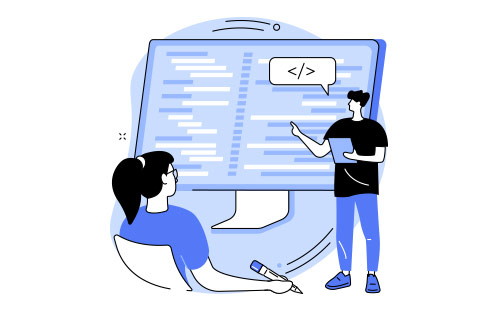2022-05-09 15:45:17 来源:中国教育在线
剑桥雅思16Test1Part3听力原文与答案 Art Projects 具体内容包括Jess和Tom觉得有用的事先准备,proposal里需要更改的地方,以及通过六幅艺术作品想要表达的东西。关于这个问题中国教育在线平台就来为各个考生解答下。

剑桥雅思16 Test1 Part3雅思听力原文
JESS: How are you getting on with your art project, Tom?
TOM: OK. Like, they gave us the theme of birds to base our project on, and I’m not really all that interested in wildlife. But I’m starting to get into it. I’ve pretty well finished the introductory stage.
JESS: So have I. When they gave us all those handouts with details of books and websites to look at, I was really put off, but the more I read, the more interested I got (Q21).
TOM: Me too. I found I could research so many different aspects of birds in art – colour, movement, texture. So I was looking forward to the Bird Park visit.
JESS: What a letdown! It poured with rain and we hardly saw a single bird. Much less use than the trip to the Natural History Museum (Q22).
TOM: Yeah. I liked all the stuff about evolution there. The workshop sessions with Dr Fletcher were good too, especially the brainstorming sessions.
JESS: I missed those because I was ill. I wish we could’ve seen the projects last year’s students did.
TOM: Mm. I suppose they want us to do our own thing, not copy.
JESS: Have you drafted your proposal yet?
TOM: Yes, but I haven’t handed it in. I need to amend some parts. I’ve realised the notes from my research are almost all just descriptions, I haven’t actually evaluated anything. So I’ll have to fix that (Q23).
JESS: Oh, I didn’t know we had to do that. I’ll have to look at that too. Did you do a timeline for the project?
TOM: Yes, and a mind map.
JESS: Yeah, so did I. I quite enjoyed that. But it was hard having to explain the basis for my decisions in my action plan.
TOM: What?
JESS: You know, give a rationale
TOM: I didn’t realise we had to do that. OK. I can add it now. And I’ve done the video diary presentation, and worked out what I want my outcome to be in the project.
JESS: Someone told me it’s best not to be too precise about your actual outcome at this stage (Q24), so you have more scope to explore your ideas later on. So I’m going to go back to my proposal to make it a bit more vague.
TOM: Really? OK. I’ll change that too then.
TOM: One part of the project I’m unsure about is where we choose some paintings of birds and say what they mean to us. Like, I chose a painting of a falcon by Landseer. I like it because the bird’s standing there with his head turned to one side, but he seems to be staring straight at you. But I can’t just say it’s a bit scary, can I?
JESS: You could talk about the possible danger suggested by the bird’s look (Q25).
TOM: Oh, OK.
JESS: There’s a picture of a fish hawk by Audubon I like. It’s swooping over the water with a fish in its talons, and with great black wings which take up most of the picture
TOM: So you could discuss it in relation to predators and food chains?
JESS: Well actually I think I’ll concentrate on the impression of rapid motion it gives (Q26).
TOM: Right.
JESS: Do you know that picture of a kingfisher by van Gogh – it’s perching on a reed growing near a stream
TOM: Yes it’s got these beautiful blue and red and black shades
JESS: Mm hm. I’ve actually chosen it because I saw a real kingfisher once when I was little. I was out walking with my grandfather (Q27), and I’ve never forgotten it
TOM: So we can use a personal link?
JESS: Sure
TOM: OK. There’s a portrait called William Wells, I can’t remember the artist but it’s a middle-aged man who’s just shot a bird. And his expression, and the way he’s holding the bird in his hand suggests he’s not sure about what he’s done. To me it’s about how ambiguous people are in the way they exploit the natural world (Q28).
JESS: Interesting. There’s Gauguin’s picture Vairumati. He did it in Tahiti. It’s a woman with a white bird behind her that is eating a lizard, and what I’m interested in is what idea this bird refers to. Apparently, it’s a reference to the never-ending cycle of existence (Q29).
TOM: Wow. I chose a portrait of a little boy. Giovanni de Medici. He’s holding a tiny bird in one fist. I like the way he’s holding it carefully so he doesn’t hurt it (Q30).
JESS: Ah right.
剑桥雅思16 Test1 Part3雅思听力答案
21-22. CE
23-24. BE
25. D
26. C
27. A
28. H
29. F
30. G
以上就是剑桥雅思16Test1Part3听力原文与答案 Art Projects的相关内容。希望可以给大家在备考过程中带来帮助。更多有关雅思方面的内容可以随时随地关注中国教育在线外语频道。


(一)由于考试政策等各方面情况的不断调整与变化,本网站所提供的考试信息仅供参考,请以权威部门公布的正式信息为准。
(二)本网站在文章内容来源出处标注为其他平台的稿件均为转载稿,免费转载出于非商业性学习目的,版权归原作者所有。如您对内容、版 权等问题存在异议请与本站联系,我们会及时进行处理解决。"